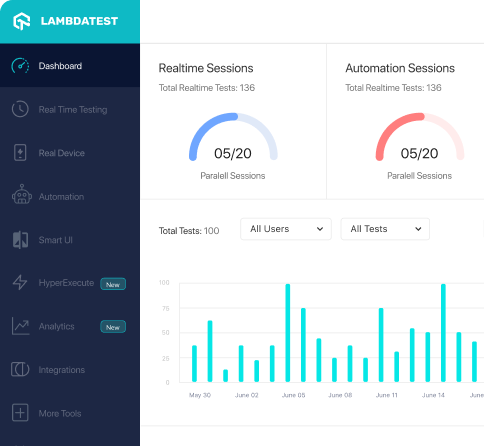How to use FactoryDeployType class of org.cerberus.crud.factory.impl package
Best Cerberus-source code snippet using org.cerberus.crud.factory.impl.FactoryDeployType
Source: FactoryDeployType.java
...18 * along with Cerberus. If not, see <http://www.gnu.org/licenses/>.19 */20package org.cerberus.crud.factory.impl;21import org.cerberus.crud.entity.DeployType;22import org.cerberus.crud.factory.IFactoryDeployType;23import org.springframework.stereotype.Service;24@Service25public class FactoryDeployType implements IFactoryDeployType {26 @Override27 public DeployType create(String deployType, String description) {28 DeployType newDeployType = new DeployType();29 newDeployType.setDeploytype(deployType);30 newDeployType.setDescription(description);31 return newDeployType;32 }33}...FactoryDeployType
Using AI Code Generation
1FactoryDeployType factoryDeployType = appContext.getBean(FactoryDeployType.class);2FactoryDeployType factoryDeployType = appContext.getBean(FactoryDeployType.class);3FactoryDeployType factoryDeployType = appContext.getBean(FactoryDeployType.class);4FactoryDeployType factoryDeployType = appContext.getBean(FactoryDeployType.class);5FactoryDeployType factoryDeployType = appContext.getBean(FactoryDeployType.class);6FactoryDeployType factoryDeployType = appContext.getBean(FactoryDeployType.class);7FactoryDeployType factoryDeployType = appContext.getBean(FactoryDeployType.class);8FactoryDeployType factoryDeployType = appContext.getBean(FactoryDeployType.class);9FactoryDeployType factoryDeployType = appContext.getBean(FactoryDeployType.class);10FactoryDeployType factoryDeployType = appContext.getBean(FactoryDeployType.class);11FactoryDeployType factoryDeployType = appContext.getBean(FactoryDeployType.class);12FactoryDeployType factoryDeployType = appContext.getBean(FactoryDeployType.class);13FactoryDeployType factoryDeployType = appContext.getBean(FactoryDeployType.class);14FactoryDeployType factoryDeployType = appContext.getBean(FactoryDeployType.class);FactoryDeployType
Using AI Code Generation
1FactoryDeployType factoryDeployType = appContext.getBean(FactoryDeployType.class);2List<DeployType> deployTypes = factoryDeployType.readAll();3for (DeployType deployType : deployTypes) {4 LOG.info(deployType.toString());5}6FactoryEnvironment factoryEnvironment = appContext.getBean(FactoryEnvironment.class);7List<Environment> environments = factoryEnvironment.readAll();8for (Environment environment : environments) {9 LOG.info(environment.toString());10}11FactoryCountry factoryCountry = appContext.getBean(FactoryCountry.class);12List<Country> countries = factoryCountry.readAll();13for (Country country : countries) {14 LOG.info(country.toString());15}16FactoryApplication factoryApplication = appContext.getBean(FactoryApplication.class);17List<Application> applications = factoryApplication.readAll();18for (Application application : applications) {19 LOG.info(application.toString());20}21FactoryApplicationObject factoryApplicationObject = appContext.getBean(FactoryApplicationObject.class);22List<ApplicationObject> applicationObjects = factoryApplicationObject.readAll();23for (ApplicationObject applicationObject : applicationObjects) {24 LOG.info(applicationObject.toString());25}26FactoryApplicationObjectGroup factoryApplicationObjectGroup = appContext.getBean(FactoryApplicationObjectGroup.class);27List<ApplicationObjectGroup> applicationObjectGroups = factoryApplicationObjectGroup.readAll();28for (ApplicationObjectGroup applicationObjectGroup : applicationObjectGroups) {29 LOG.info(applicationObjectGroup.toString());30}31FactoryApplicationEnvironment factoryApplicationEnvironment = appContext.getBean(FactoryApplicationEnvironment.class);FactoryDeployType
Using AI Code Generation
1FactoryDeployType factoryDeployType = new FactoryDeployType();2DeployType deployType = factoryDeployType.create(deployTypeString);3FactoryEnvironment factoryEnvironment = new FactoryEnvironment();4Environment environment = factoryEnvironment.create(environmentString);5FactoryCountry factoryCountry = new FactoryCountry();6Country country = factoryCountry.create(countryString);7FactoryBuildRevisionInvariant factoryBuildRevisionInvariant = new FactoryBuildRevisionInvariant();8BuildRevisionInvariant buildRevisionInvariant = factoryBuildRevisionInvariant.create(buildRevisionString);9FactoryLabel factoryLabel = new FactoryLabel();10Label label = factoryLabel.create(labelString);11FactoryRobot factoryRobot = new FactoryRobot();12Robot robot = factoryRobot.create(robotString);13FactoryRobotExecutor factoryRobotExecutor = new FactoryRobotExecutor();14RobotExecutor robotExecutor = factoryRobotExecutor.create(robotExecutorString);15FactoryRobotHost factoryRobotHost = new FactoryRobotHost();16RobotHost robotHost = factoryRobotHost.create(robotHostString);17FactoryRobotPort factoryRobotPort = new FactoryRobotPort();18RobotPort robotPort = factoryRobotPort.create(robotPortString);19FactoryRobotPlatform factoryRobotPlatform = new FactoryRobotPlatform();20RobotPlatform robotPlatform = factoryRobotPlatform.create(robotBlogs
Check out the latest blogs from LambdaTest on this topic:
Enterprise resource planning (ERP) is a form of business process management software—typically a suite of integrated applications—that assists a company in managing its operations, interpreting data, and automating various back-office processes. The introduction of a new ERP system is analogous to the introduction of a new product into the market. If the product is not handled appropriately, it will fail, resulting in significant losses for the business. Most significantly, the employees’ time, effort, and morale would suffer as a result of the procedure.
So, now that the first installment of this two fold article has been published (hence you might have an idea of what Agile Testing is not in my opinion), I’ve started feeling the pressure to explain what Agile Testing actually means to me.
Unit and functional testing are the prime ways of verifying the JavaScript code quality. However, a host of tools are available that can also check code before or during its execution in order to test its quality and adherence to coding standards. With each tool having its unique features and advantages contributing to its testing capabilities, you can use the tool that best suits your need for performing JavaScript testing.
Have you ever visited a website that only has plain text and images? Most probably, no. It’s because such websites do not exist now. But there was a time when websites only had plain text and images with almost no styling. For the longest time, websites did not focus on user experience. For instance, this is how eBay’s homepage looked in 1999.
We launched LT Browser in 2020, and we were overwhelmed by the response as it was awarded as the #5 product of the day on the ProductHunt platform. Today, after 74,585 downloads and 7,000 total test runs with an average of 100 test runs each day, the LT Browser has continued to help developers build responsive web designs in a jiffy.
Automation Testing Tutorials
Learn to execute automation testing from scratch with LambdaTest Learning Hub. Right from setting up the prerequisites to run your first automation test, to following best practices and diving deeper into advanced test scenarios. LambdaTest Learning Hubs compile a list of step-by-step guides to help you be proficient with different test automation frameworks i.e. Selenium, Cypress, TestNG etc.
LambdaTest Learning Hubs:
- JUnit Tutorial
- TestNG Tutorial
- Webdriver Tutorial
- WebDriverIO Tutorial
- Protractor Tutorial
- Selenium 4 Tutorial
- Jenkins Tutorial
- NUnit Tutorial
- Jest Tutorial
- Playwright Tutorial
- Cypress Tutorial
- PyTest Tutorial
YouTube
You could also refer to video tutorials over LambdaTest YouTube channel to get step by step demonstration from industry experts.
Most used methods in FactoryDeployType
Try LambdaTest Now !!
Get 100 minutes of automation test minutes FREE!!



